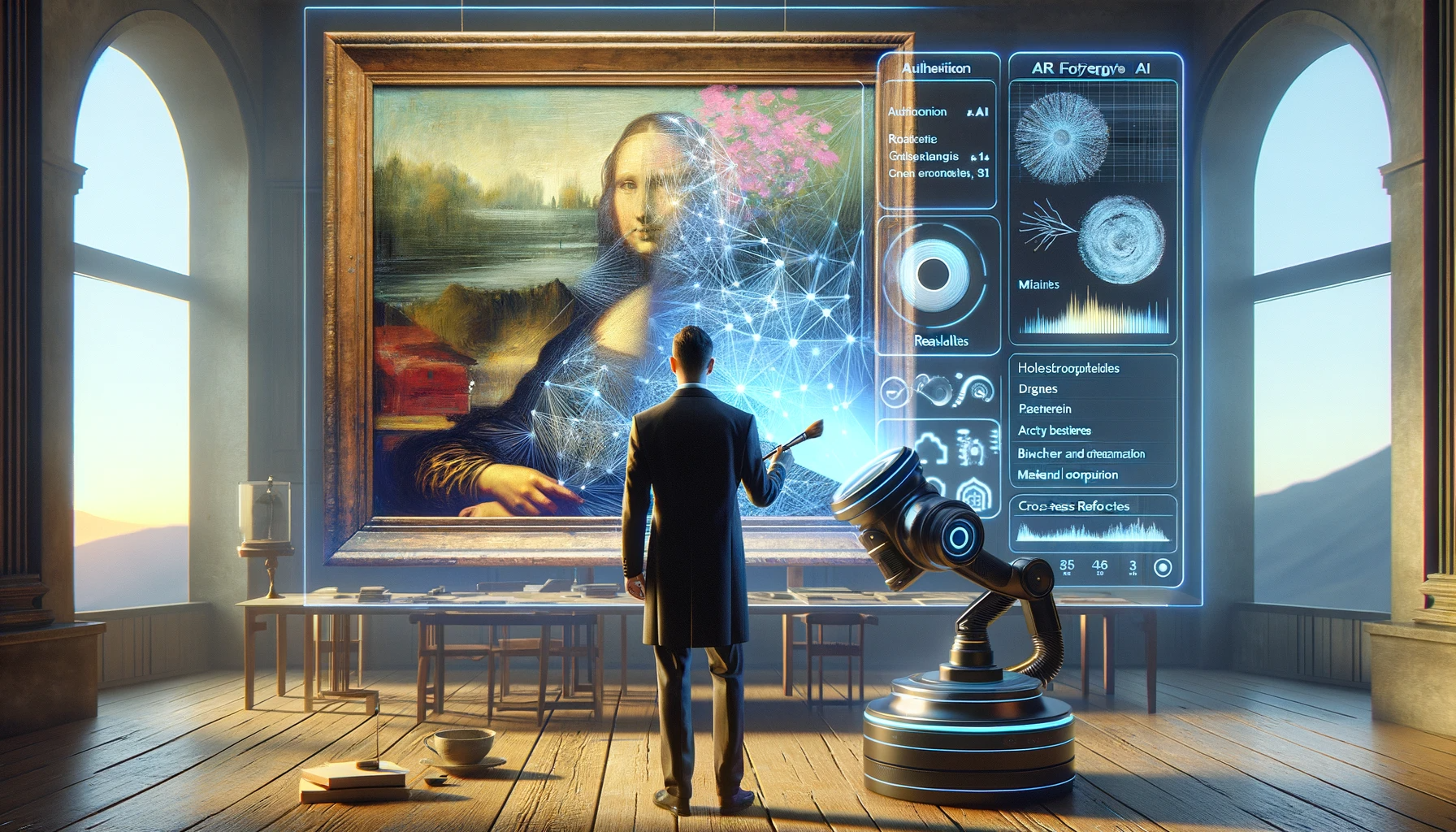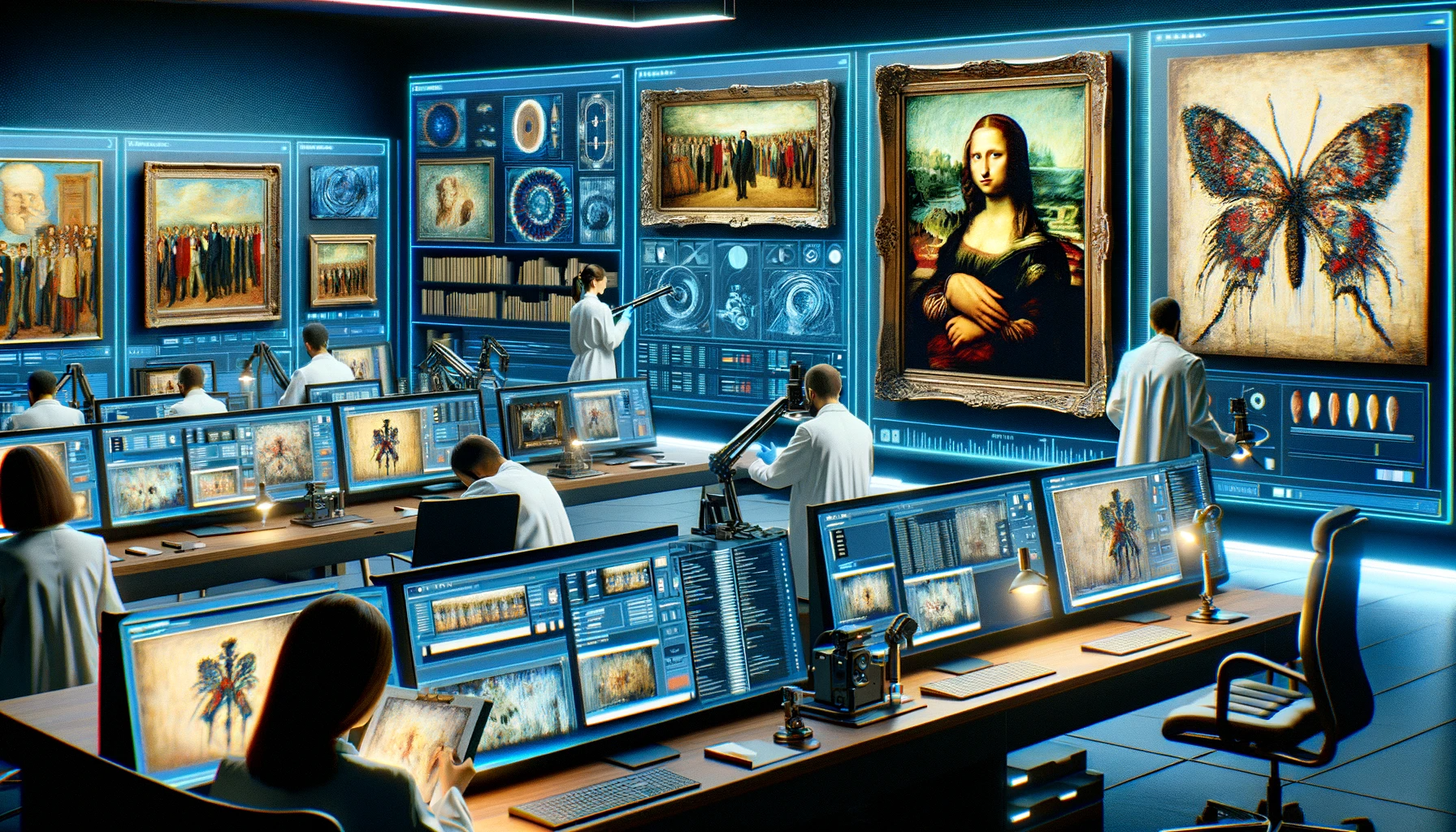The world of art is both a treasure trove of human creativity and a realm fraught with deception. Art forgery, the act of creating counterfeit artworks with the intent to deceive, has plagued the art world for centuries. The consequences of art forgery extend far beyond financial losses; they undermine the cultural heritage and the integrity of art markets. As art forgers become increasingly sophisticated, a pressing question arises: Can artificial intelligence (AI) assist in detecting and preventing art forgery while revolutionizing the authentication process?
This article delves into the complex and captivating intersection of AI and the art world. It explores the potential of AI as a game-changing tool in the fight against art forgery and authentication challenges. From analyzing brush strokes to scrutinizing pigments and signatures, AI holds the promise of transforming how we identify genuine artworks and protect our cultural heritage.
The Art Forgery Problem
Art forgery is a shadowy underbelly of the art world, with a history dating back centuries. Notable forgers like Han van Meegeren and forgeries of renowned artists like Leonardo da Vinci’s “Salvator Mundi” have made headlines. These cases underscore the enduring problem of art forgery, where skilled counterfeiters deceive collectors, museums, and experts, often for substantial financial gain.

The ramifications of art forgery extend beyond financial loss. It erodes trust in the art market, diminishes the value of authentic works, and undermines the cultural significance of art. Authentication challenges further exacerbate the problem, as experts must navigate a labyrinth of provenance, stylistic nuances, and historical records to determine an artwork’s legitimacy.
How AI is Revolutionizing Art Authentication
Art authentication, a complex and sometimes contentious process, stands to benefit immensely from AI’s capabilities. At the core of AI’s influence in this domain lies computer vision and machine learning, enabling systems to “see” and understand artworks in unprecedented ways.
AI-powered algorithms can analyze artworks with incredible precision, examining minute details such as brushwork, pigments, and even canvas fibers. By comparing these details with vast databases of known artworks, AI can swiftly identify inconsistencies and anomalies, raising red flags for potential forgeries. Furthermore, AI can recognize an artist’s unique style and detect counterfeit signatures or alterations that might elude the human eye.
Examples of AI-powered tools and systems, such as image recognition software and spectroscopy analysis, are already making significant strides in art authentication. These tools are not meant to replace human expertise but rather to complement and enhance the efforts of art historians, conservators, and collectors in their pursuit of authenticating artworks.
In the following sections, we will delve deeper into the key applications of AI in art authentication, explore the challenges and limitations it faces, and contemplate the future landscape where AI and human expertise work hand-in-hand to preserve the authenticity and cultural significance of art.
Key Applications of AI in Art Authentication
AI is revolutionizing art authentication across various crucial areas:
Forgery Detection: AI can scrutinize artworks for inconsistencies, anomalies, or patterns that may indicate forgery, even when dealing with highly skilled counterfeiters.
Artist Style Identification: AI can identify an artist’s unique style and detect deviations or inconsistencies, aiding in the attribution of unsigned or disputed artworks.
Material Analysis: AI-powered spectroscopy and imaging techniques can analyze pigments, brushwork, and canvas, revealing details about an artwork’s age and origin.
Hidden Details Detection: AI’s precision allows it to uncover concealed signatures, alterations, or hidden layers in artworks, shedding light on their history.
Provenance Verification: AI can analyze historical records, auction catalogs, and documentation to verify an artwork’s provenance, providing critical context for authentication.
Challenges and Limitations
While AI offers tremendous promise, it faces several challenges and limitations in the realm of art authentication:
Data Requirements: AI algorithms require extensive training data, which may be limited for certain artists or periods, leading to potential biases in authentication.
Overreliance on Technology: Overreliance on AI could lead to a decline in the role of human experts, potentially overlooking critical nuances or historical context.
Ethical Concerns: The creation of AI-generated art for deception or forgery purposes raises ethical concerns about its impact on the art world.
Algorithmic Bias: AI can inherit biases present in training data, potentially affecting authentication outcomes and reinforcing existing biases in the art world.
Privacy: The use of AI in analyzing art may involve scanning, imaging, or sharing artworks, raising privacy concerns, especially for sensitive or private collections.
It is crucial to recognize these limitations while harnessing the potential of AI in art authentication, emphasizing the importance of human oversight and expertise.
The Future of AI in Art Authentication
The future of AI in art authentication is rife with possibilities:
Advancements in Technology: AI will continue to evolve, becoming even more precise in analyzing artworks, potentially expanding its applicability to new areas of art authentication.
Enhanced Art Market Transparency: AI could contribute to greater transparency in the art market by providing insights into provenance, transaction history, and authenticity.
Blockchain Integration: The integration of blockchain technology with AI could create secure, immutable records of an artwork’s history and ownership.
AI-Assisted Conservation: AI may assist conservators in preserving artworks, monitoring their condition, and recommending suitable restoration techniques.
Education and Awareness: AI-powered tools can educate art enthusiasts about the techniques and styles of various artists, fostering a deeper appreciation for art.

In conclusion, AI’s role in detecting and preventing art forgery while enhancing art authentication is both exciting and transformative. While AI possesses the power to analyze artworks with unparalleled precision, it should be viewed as a valuable tool to complement, rather than replace, the expertise of art historians, conservators, and collectors.
As AI continues to advance, the art world must navigate the challenges and ethical considerations it poses. A harmonious coexistence of AI and human expertise offers the best path forward, ensuring the preservation of cultural heritage, the integrity of art markets, and the continued appreciation of art’s beauty and significance. With AI as a trusted ally, we embark on a journey to safeguard the authenticity and legacy of the world’s most cherished artworks.
